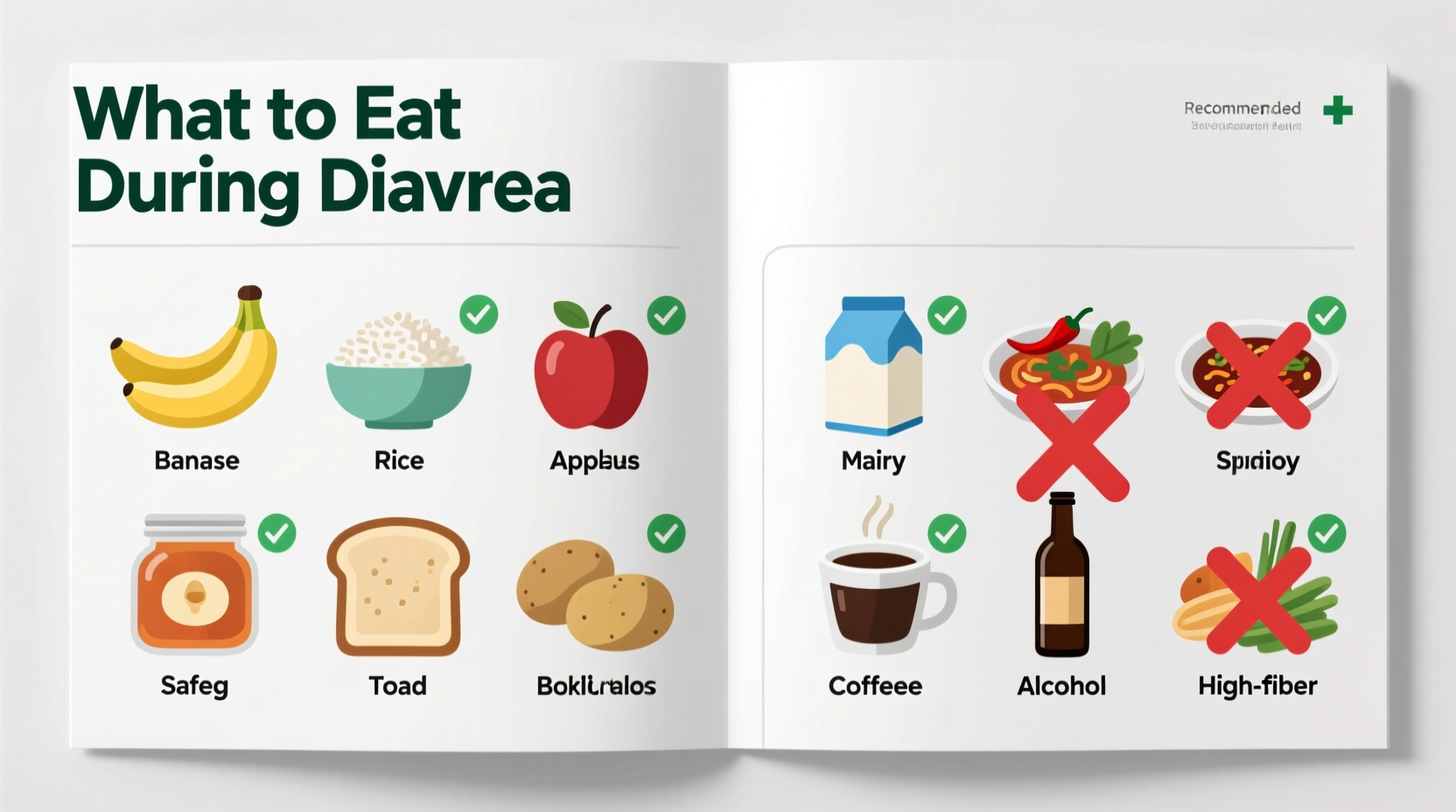When experiencing diarrhea, the best foods to eat include bananas, rice, applesauce, toast (BRAT diet), boiled potatoes, and clear broths. These bland, low-fiber foods help firm stools while providing essential nutrients. Stay hydrated with oral rehydration solutions, water, or weak tea. Avoid dairy, fatty foods, spicy dishes, and high-fiber foods until symptoms improve.
Diarrhea strikes unexpectedly, leaving you wondering what to eat for quick relief. You need practical, science-backed dietary guidance that works immediately. This guide delivers exactly that - clear food recommendations based on medical guidelines from leading health authorities, organized in the sequence you'll need them when managing symptoms.
Immediate Action Plan: First 24 Hours
When diarrhea hits, your first priority is preventing dehydration while gently reintroducing foods. The Centers for Disease Control and Prevention (CDC) emphasizes that fluid replacement is more critical than food intake during the initial phase. Start with small sips of clear liquids every 15 minutes.
| Recommended Fluids | How Much to Drink | Frequency |
|---|---|---|
| Oral rehydration solutions | 1 cup (240ml) | After each loose stool |
| Water | 4-8 oz (120-240ml) | Every 15-30 minutes |
| Weak black tea | 4-6 oz (120-180ml) | Between other fluids |
| Clear broth | 1/2 cup (120ml) | Every 1-2 hours |
According to the World Health Organization, oral rehydration solutions containing the proper balance of salts and sugars are more effective than water alone for preventing dehydration during diarrhea episodes. Commercial solutions or homemade versions (1 liter water + 6 level teaspoons sugar + 1/2 level teaspoon salt) provide optimal electrolyte replacement.
Best Foods to Eat as Symptoms Improve
Once you can keep fluids down for several hours, gradually introduce bland, binding foods. The BRAT diet (bananas, rice, applesauce, toast) has been recommended by healthcare providers for decades, though modern guidelines suggest expanding this to include other easily digestible options.

Foods That Help Firm Stools
- Bananas - Rich in potassium (lost during diarrhea) and pectin, which helps absorb excess fluid in the gut
- White rice - Low-fiber carbohydrate that's gentle on the digestive system
- Applesauce - Contains soluble fiber that binds bowel movements
- Plain toast - Dry, bland carbohydrate that's easy to digest
- Boiled potatoes - Provides energy without irritating the gut
- Oatmeal - Contains soluble fiber that can help normalize bowel function
Timeline for Dietary Recovery
Understanding the typical progression helps set realistic expectations. Most acute diarrhea cases follow this pattern:
Hours 0-12: Focus exclusively on fluid replacement. Avoid solid foods if nausea is present.
Hours 12-24: Introduce small portions of BRAT foods if fluids are staying down. Start with 1-2 tablespoons of applesauce or a few bites of banana.
Days 1-2: Gradually increase portions as tolerated. Add boiled potatoes or plain crackers.
Days 2-3: Most people can begin incorporating lean proteins like baked chicken or turkey.
Days 3-5: Return to normal diet as symptoms resolve, but continue avoiding irritants.
The Mayo Clinic notes that most acute diarrhea cases resolve within 2-3 days with proper hydration and dietary management. If symptoms persist beyond 48 hours in adults or 24 hours in children, consult a healthcare provider.
Foods to Avoid During Diarrhea Episodes
Certain foods can worsen symptoms or delay recovery. The American Gastroenterological Association identifies these common dietary triggers:
- Dairy products - Lactose intolerance often develops temporarily during diarrhea
- Fatty or fried foods - Difficult to digest and can stimulate bowel movements
- Spicy foods - Irritate the digestive tract lining
- High-fiber foods - Raw vegetables, whole grains, and beans increase bowel activity
- Caffeine and alcohol - Both have diuretic effects that worsen dehydration
- Sugar substitutes - Sorbitol and mannitol commonly found in sugar-free products
When Dietary Management Isn't Enough
While dietary adjustments help most cases of acute diarrhea, certain situations require medical attention. The National Institutes of Health identifies these red flags that indicate you should seek immediate medical care:
- Diarrhea lasting more than 2 days (adults) or 24 hours (children)
- Signs of severe dehydration (extreme thirst, dry mouth, little or no urination)
- Fever above 102°F (39°C)
- Stool containing blood or pus
- Severe abdominal or rectal pain
For travelers' diarrhea or suspected bacterial infections, your healthcare provider may recommend specific medications. Never take anti-diarrheal medications if you have fever or bloody stools without consulting a doctor first, as this can worsen certain infections.
Preventing Future Episodes
After recovery, gradually reintroduce your regular diet over 3-5 days. The Academy of Nutrition and Dietetics recommends these long-term strategies to reduce recurrence:
- Maintain good hand hygiene, especially before eating and after using the bathroom
- Be cautious with food safety when traveling to areas with different sanitation standards
- Consider probiotic-rich foods like yogurt (once recovered) to support gut health
- Stay hydrated consistently, not just during illness
- Identify and avoid personal food triggers that may cause digestive upset
Practical Meal Plan for Diarrhea Recovery
Here's a sample day of eating as you recover from diarrhea:
| Time | Recommended Foods | Portion Size |
|---|---|---|
| Morning | Weak black tea + 1/2 banana | 4 oz tea + 2-3 bites banana |
| Mid-morning | Applesauce + ORS | 2 tablespoons + 4 oz |
| Lunch | White rice + clear broth | 2 tablespoons rice + 1/2 cup broth |
| Afternoon | Plain toast + weak tea | 1 small piece + 4 oz |
| Dinner | Boiled potatoes + ORS | 2 tablespoons + 4 oz |
Gradually increase portions as tolerated throughout your recovery. Listen to your body - if a food causes discomfort, return to simpler options for another meal or two before trying again.











 浙公网安备
33010002000092号
浙公网安备
33010002000092号 浙B2-20120091-4
浙B2-20120091-4